
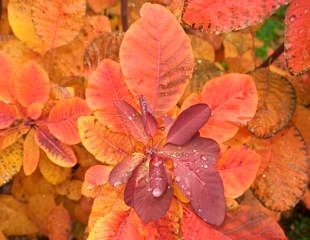
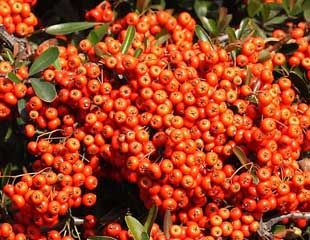
What to do in the garden in October

By October, the garden has taken on its autumn colours, and the weather can be full of surprises. One moment it's warm and golden — an Indian summer — and the next, a sharp frost arrives without warning. Back in 2019, parts of northern England saw frost as early as the 1st of October, so it's easy to be caught out.
There's still plenty of colour in the garden, from Dahlias and Nerines to vibrant autumn shrubs. I took this image at the Dahlia walk, Nottingham Arboretum, on 2/10/2025.
The October gallery has ideas about what's looking good in October to brighten up your borders this month.
Quick list for October Gardening Jobs:
Plant spring bulbs throughout September, October and November.
Divide and replant perennials in October while the soil is still warm.
Protect tender plants before the first frost.
Sow winter crops such as garlic, onions and hardy salads
Bag up leaves for leaf mould.
Lightly prune roses to prevent windrock.
Beware early frosts! Protect tender plants
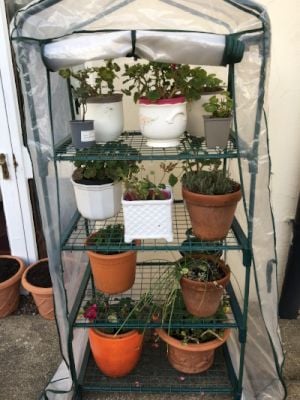
Before frosts bite, bring under glass or protect all half-hardy plants which have had a summer outing. This includes tender herbs, Chilli plants, pelargoniums, citrus fruits, olive trees, and any tender exotics.
Tips on how to overwinter tender plants and also a short Sunday Gardener video with a step-by-step guide about how to overwinter plants successfully.
This image is a simple covered grow house, which I have had for years and have successfully overwintered many tender plants in it.
It is ideal if you are short of space. Top tip: if there is a lot of autumn and winter sun, it can get quite hot inside. Unzip it regularly to ventilate for air circulation. Crocus has a good selection of all types of cloches, growhouses, and cold frames ( affiliate link)
The Big Clear Up- do we still bother?
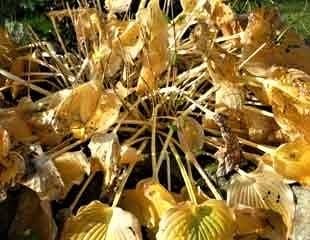
By October, the garden can look a bit of a mess, with collapsing perennials, dying leaves and debris. Trends are away from tidy gardens to allow more wildlife habitat. The fallen leaves, debris and old plant material are all overwintering habitats for insects.
What, if anything, to cut back is a personal choice?
I cut very few perennials, but do cut back some of the herbaceous perennials, usually those which have turned to mush with unsightly faded leaves, such as hosta illustrated.
In the spring, I cut back to ground level: Peonies, Leucanthemum, Nepeta (Cat Mint), Hardy Geraniums, Phlox.
Slightly less hardy perennials, such as Penstemons, are best left with the top growth in place to provide winter protection.
Whatever you do, cut back, don't cut back Clematis- more info
October is a good time to mulch to protect the more tender plants through the winter and improve the organic structure of the soil.
Before frost take cuttings
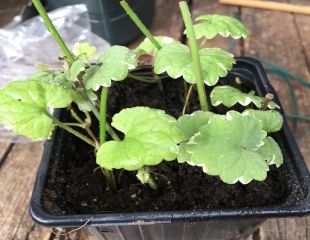
You can increase your stock of plants to have free plants for next year by taking cuttings. Some plants root more easily than others, it's trial and error.
Illustrated here is Nepeta, a foliage plant commonly used in summer bedding arrangements. It grows well from cuttings. In the image, I cut about 4 sections when clearing out the bedding. Put a plastic bag and an elastic band over it to create a suitable growing environment ( how to make a homemade propagator) or place it in a propagator. Put it in a light place, out of direct sunlight, and check it in 2 weeks/ month/6 weeks time. As soon as the cuttings have rooted, take them out of the propagator/poly bag and leave them in a frost-free greenhouse overwinter, ready for spring next year.
Divide Perennials
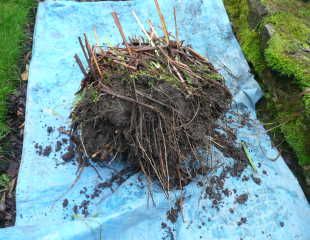
The rule of thumb is to divide perennials every 3-5 years, but some plants, Achillea, prefer to be divided more often, and others, like Peony, don't like to be disturbed at all. The best way to judge is if a perennial is performing poorly, and it's been in for a while, or has a bald patch in the middle, it's probably safe to dig up and divide.
Autumn is a good time to divide herbaceous perennials. This is a gardening job that can make a mess in the border, as established plants are hard to dig out. In the effort to get the plant out, neighbouring plants get trampled, which doesn't matter much in October, but can be a disaster in May.
Illustrated is a clump of Day lilies which has not been flowering well. It's congested. I dug it up and cut it into smaller pieces using an old bread knife. Select the best parts and replant into the previous site, or add to the border elsewhere and compost the old, tired centre of the plant.
Make use of fallen leaves
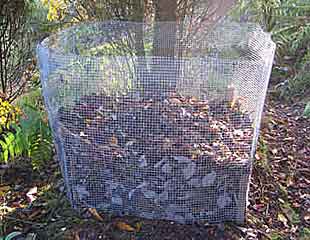
Fallen leaves are an excellent source of organic matter for the garden and make a great mulch, and also, when sieved, compost. You can save leaves in three ways:
The simplest way to get the organic benefit of leaves into your soil is to rake them off the lawn and onto the borders. Fallen autumn leaves on the lawn can cause dieback underneath, but they are ideal on the borders. The worms will take them down into the soil and enrich it.
You can also store leaves in bin bags, but it is important to put holes in them to allow air in; otherwise, they will become a slimy mess.
Another way to make a simple pen. Wrap chicken wire around a bin with a stake in each corner to give structure. Rake up and pile the leaves in. They will rot down over the gardening year, ready to spread on borders as mulch following winter/spring. You can tell when it's ready, as it will be well rotted and crumbly.
Plant Spring Bulbs
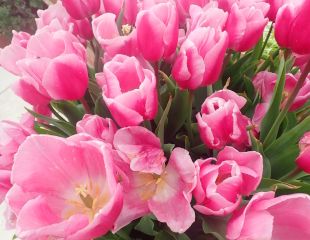
Autumn is the traditional time for planting spring bulbs. Daffodils need to go in first in September and October; Tulips later in November. Timing is important especially for Tulips which need to be planted late.
Top tips:
The correct planting depth is important to ensure the bulbs flower. Too shallow, and they may not flower after year one. An easy rule of thumb is to plant the bulb 3 times its own depth, and if you are unsure, plant deeper rather than shallow. Here is a handy Table setting out the planting depths for bulbs.
It is not necessary when planting new spring bulbs in containers to use fresh compost. You can reuse compost from any end-of-season containers being cleared out. A bulb is a complete power pack and has everything within the bulb to flower next year and needs no additional nutrients. Read more about using old compost and saving money.
Autumn Sow Sweet Peas
You can germinate sweet peas in autumn and overwinter them in the greenhouse/ under glass. Autumn-sown sweet peas tend to produce sturdier plants and usually flower earlier.
Sow one or two seeds in each root trainer or pot. Once they have germinated and started growing, harden off on milder days outside, gradually getting the plants acclimatised to the colder weather, and bring them in under glass before it gets really cold.
Sweet peas are H2 hardy, but in small containers, they are prone to freezing roots. For this reason, it is best to overwinter in a greenhouse or cold frame just to keep the worst of the winter weather away from the plants and roots.
This video explains how to cut back sweet peas to get more stems per plant and so more flowers. The video has images of sweet peas before and after cutting back.
A short 6-minute video explains how to sow and germinate sweet peas. The video revisits 11 days later to show germination and the next steps for overwintering these hardy annuals.
Autumn: time to plant and Move shrubs.
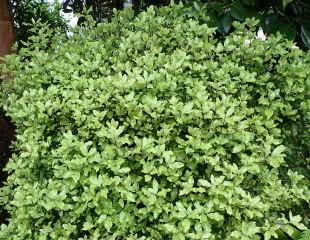
Sometimes, when we look at the garden towards the end of the summer, there is a realisation that a shrub is just in the wrong place.
The good news is that you can successfully move evergreen shrubs, including fairly established shrubs, and autumn is the best time.
Check out tips on How to Move a shrub
We think of spring as a busy planting time. But in fact, autumn is also a good time, if not a better time, to plant or move perennials and shrubs. The soil is warm, and there is less leaf growth. This means the plant puts energy into roots, and there is usually more rain in autumn than in spring.
Before the weather and the ground get cold, you can plant almost anything except half-hardy plants because they will not establish before the cold hits. Also, avoid planting drought-tolerant plants as the winter wet will be too much of an early challenge.
Autumn Crocus

This is Colchicum autumnale, common name Autumn Crocus, a bulb similar to the familiar Spring variety, but it flowers in the Autumn. It is usually offered for sale in the summer for planting.
The flowers appear first, followed by the leaves, and they make a lovely splash of colour. Autumn crocus is best planted in July /August in well-drained soil. Colchicum are all purple and mauve-flowering, but note that they are highly poisonous.
Plant Winter Pansies
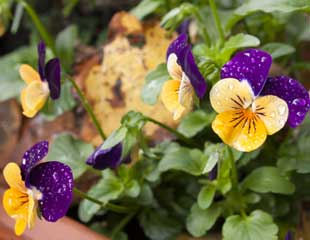
This is a good time to plant winter bedding. The garden centres are full of pansies and violas. They come home from the garden centre looking lovely, but often after a short while, they seem to sulk, sometimes for the rest of the winter. This is common in wetter, colder parts.
The bedding plants in the garden centre have been grown in ideal conditions. When we buy the plants, we often put them outside in less than ideal conditions, and the result is a sulk.
Two tips:
Buy and plant the bedding earlier, in the container in which they are going to spend the winter. Place the container under glass/in the greenhouse, or in a sheltered spot to allow plants to establish in kinder conditions. Introduce them gradually to the real outside weather as you would summer bedding.
If your conditions are on the wet /cold side, you may find the pansies and violas will establish better in a hanging basket.
Saving seed

October is ideal for seed collection for use next year. In the image are Nasturtium seeds, which are so easy to pick. They fall off the plant, store easily and germinate very well, providing lots of free summer bedding. Nasturtiums are so easy. They are a good place to start if you want to try saving and using seeds from your own plants.
As they flower for months, extending into October, bees also love them.
As with all seed collection, dry them out, to the point they turn brown. Take out the seed, carefully shaking or scraping out the small seeds and store packets in a dry place - a sealed tin is useful.
Label even if the seed looks distinctive, because by spring, 4/5 months later, it is easy to forget what seed it was and then it will be just mystery seed. Once thoroughly dry, a good place to store overwinter is the refrigerator.
Video advice on saving seed over the winter. - tips on how to store seed over winter
October in the Veg plot
Harvest time
Main crop carrots can stay all winter if you leave them, or you can lift them if you need to. The exception is if your veg plot is wet and heavy, over winter, the carrots may rot, in which case it's best to lift them and store. After digging up, cut off the top foliage and store in cool dark dry place, such as a garage and check regularly to make sure that a bad carrot is not infesting the rest.
If you are sowing late lettuce and rocket in the veg plot, it may need protection, such as a cloche to ensure it germinates. Both Lettuce and rocket are quite hardy and will continue growing well into late autumn and early winter. How to Grow Winter Lettuce.
If Autumn is mild - how to achieve a late crop of Broad beans.
Tomato Care

Tomatoes will continue to ripen slowly, depending on sunshine and warmth levels in Autumn. To encourage fruiting, continue to remove any faded or discoloured leaves to prevent disease. In addition, remove any flowers or tiny tomatoes which, at this stage, are unlikely to come to fruit before the weather changes completely.
Eventually, as light and warmth get less, you will need to cut your losses and bring the tomatoes inside somewhere warm to ripen. I have found a reliable way to ripen tomatoes is to cut them on the vine and then place them on a warm windowsill, sunny porch or conservatory in a dish or on cardboard and leave to ripen; they will, and it works.
More information on a fool proof way to ripen tomatoes. There is no need for green chutney unless you like it.
Freeze Chillies
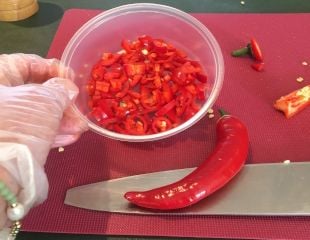
Although you can dry chillies, I think the best way to save them and deal with the inevitable glut is to freeze them.
You can freeze them whole, but they defrost better and are easier to use if you chop and freeze them. A gardener's Lazy Chillies
Plant Onions and Garlic

Garlic and onions planted in early autumn get a head start on spring next year. In particular, Garlic benefits from a chilly spell of at least a month of good cold weather for the bulbs to mature. Top tips:
Plant Garlic, which is sold as suitable for planting in autumn.
If your soil is heavy or tends to get waterlogged over winter, bulbs will rot. Alternatively, plant into containers and overwinter outside, transfer to the veg plot in spring; or delay planting until spring.
Save herbs for winter
Tender Herbs Basil, Coriander, Parsley, Dill & Mint cannot withstand frost, and it is best to pot them up and bring under cover before any autumn chill. Whilst mint and Parsley are frost-hardy, the winter cold and wet damage them, and the leaves are not as good.
An indoor herb garden is handy, even with some hardy herbs in it, as it saves the dash out in the rain/sleet/snow to pick culinary herbs.
This is also a good time to replenish dried herbs, which lose their pungency after storage. Oregano, sage, thyme, and rosemary are ideal for drying. Pick stems and strip the leaves from stalks, lay on tray in the oven on the lowest setting with the door open to allow any moisture to escape. Leave like this for about 30 mins and when cool place in air-tight jars.
Equally, the simple method is to pick them, hang them up to dry and then collect into jars.
This video shows how to make a cheap and easy herb garden, no green fingers required and no tricky sowing seeds and germination.
Make a herb garden from water cuttings, which are very easy and plant division. Simple and foolproof, this video explains an inexpensive way to make more herbs for less money and create your own herb garden.
Pot up Strawberry Runners

If you have taken runners from the strawberry plants earlier in the year, now is a good time to plant them out. Before planting them, check that they are well rooted, and then plant them well spaced in the strawberry bed, ready for next year. Plant them in an area of the plot which will be easy to cover with a net, which is essential if you want to enjoy the strawberries rather than the birds.
Strawberries are an easy crop to grow.

